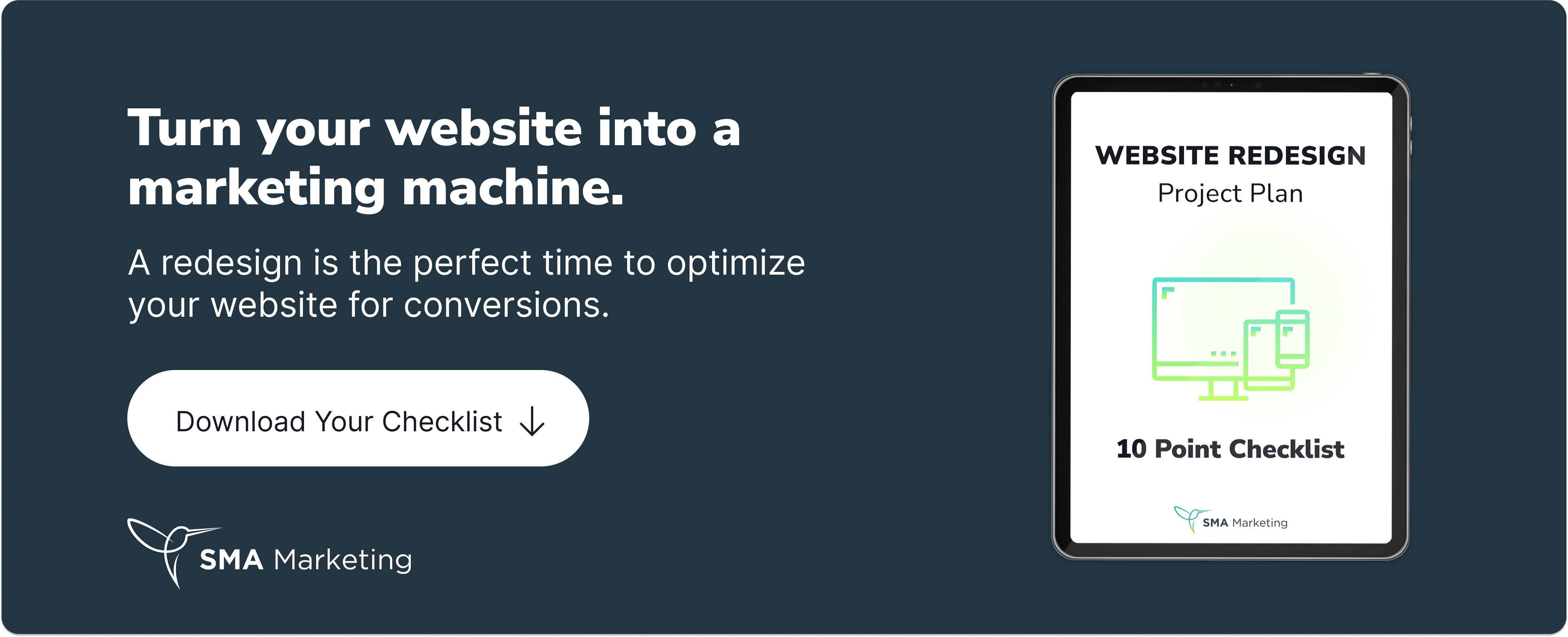Table of Contents
Web design and user experience (UX) go hand-in-hand. A well-designed website should provide an intuitive, enjoyable user experience and a great design aesthetic. Because of the rapidly changing web design trends, staying up-to-date with the latest styles in user experience design is essential. However, because of the wide range of design elements available, it’s always best to prioritize user experience best practices when designing or redesigning a website.
A recent HubSpot report found that “88% of online consumers are less likely to return to a site after a bad experience.” In today’s competitive online spaces, ensuring your website has a good user experience (UX) is crucial. As important as UX is, the definition of “good customer experiences” varies.
There are several factors to consider when designing a website, but if you keep user experience in mind from the start of your design process, you’ll be on your way to creating a successful site. Let’s explore what user experience design is and how you can have a website that connects with your target audience and incorporates the fundamental principles of UX design.
What is User Experience?
User experience (UX) is how a person feels when using a product, system, or service. It’s a user’s overall experience with a company, from initial contact to post-purchase follow-up. Good UX leads to customer satisfaction and loyalty, while bad UX can drive customers away.
There are many aspects to user experience, all of which must be considered for a product or service to succeed. The user interface (UI) is one important element ~ this is what the user sees and interacts with, and it needs to be well-designed and user-friendly.
Other essential elements include information architecture (IA), which is how information is organized and presented, and usability, which is how easy it is for users to achieve their goals.
User experience can be improved at every user journey stage, from initial awareness to purchase and after-sales service. Therefore, it’s important to consider UX at every step of the product or service development process to create a seamless and enjoyable experience for the users.
Many tools and techniques can be used to improve user experience. These include user research, user testing, usability testing, heuristic evaluation, and A/B testing. By using these tools, companies can gain insights into how users interact with their products and services and make improvements accordingly.
Why is User Experience Important in Web Design?
User experience is essential in web design for many reasons. First and foremost, it helps ensure that your website visitors have a positive experience when using it. Secondly, user experience helps improve your website’s search engine optimization (SEO) since search engines consider user experience when ranking websites. Finally, a good user experience increases website conversions since people are more likely to purchase from a site that is easy to use and navigate.
Incorporating User Experience Design Into Your Website Update
Your website is often your first opportunity to impress your potential customers. It’s tempting to include flashy design elements, such as pop-up boxes, that invite your site visitor to sign up for your email newsletter. While this certainly benefits your company, it may not create the best experiences for users. By layering UX into web page development and content strategies, you will increase the chances of a positive user experience for your target audience. Let’s explore how applying user experience design will improve your website.
Start With Your Buyer Persona
When you have a well-developed buyer persona, decisions about the type of visual communication to use are easier. Does your persona appreciate a discount so much they will hand over an email address without checking out your products? Are your customers more likely to search on mobile devices rather than desktops? The answers to these questions guide when and how to use email collection forms for the best digital experiences.
Map a Path for User Conversions
Your website should guide your users through a clear buyer’s journey. If an annoying pop-up box that is difficult to close on mobile impedes the awareness stage, you may lose potential customers before they learn how amazing you are!
Because the ideal user flow takes time to create and often includes design iterations, A/B testing will improve your website design. Simplify your conversion path strategy with these examples of steps users may take:
1. Organic Search > Home Page > Product Page > Shopping Cart
2. Organic Search > Blog Post > Product Page > Contact Page
3. YouTube Video > Free Resource (website landing page) > Email with website link > Product Page > Shopping Cart
4. Social Media Post > Free Resource > Email with website link > Request via email for services
As you can see, each path begins with awareness, moves the user to consideration, and then to a decision.
Test Paths to Conversion
UX design will remove user friction and develop a clear path for conversion. For example, a web design may include a button suggesting target users download a resource from the home page. With a clearly mapped buyer’s journey, a UX review might suggest changing the button link to a service page rather than a resource.
If you’re uncertain which link is best to include on a button, run an A/B test for 30-90 days and see which page results in more button clicks. This testing is often called the iteration stage of the user experience design process. It is helpful to have data to guide your future design choices.
User Experience Examples in Web Design
In web design, user experience (UX) includes considerations such as “How easy is it for a user to find the information they are looking for on a website” or “How easy is it to use the various features of a website?” Creating a good UX for a website requires considering users’ needs and wants and designing the website accordingly.
Improving a website’s UX can positively impact various aspects of a business, such as increased customer satisfaction and higher conversion rates. Therefore, businesses must invest time and resources into creating a good UX for their website.
Some user experience examples in web design include:
- Using white space effectively
- Designing for user flow
- Creating a consistent user interface
- Using clear and concise language
- Using visuals to guide the user
- Creating an intuitive search function
- Ensuring websites are accessible for people with disabilities
- Designing and placing forms
- Writing content for product features
Is Web Development the Same as UX Design?
Web development and UX design are two distinct but related disciplines. Web development focuses on the technical aspects of building websites, while UX design focuses on the user experience with those websites.
Both web developers and UX designers need to have a strong understanding of how users interact with websites. However, web developers focus more on the behind-the-scenes aspects of website creation, while UX designers focus more on ensuring that user interactions are smooth and enjoyable. Both skill sets add value to the user experience.
What is the Difference Between UX and UI in Web Design?
User experience (UX) and user interface (UI) are often used interchangeably but are two different concepts. UX refers to a user’s overall experience when using a product, while UI focuses on the graphical interface and how it interacts with users.
While UX and UI are necessary for creating a successful product, they have different goals. UX designers focus on ensuring the user has a positive experience when using the product, while UI designers focus on creating an attractive and user-friendly interface.
Having a good UX and UI is important, as they work together to create a successful product. A product with a great UX but a poor UI will be challenging, while a product with a great UI but a poor UX will be frustrating to use.
Web design and user experience play a significant role in the success of any website. Creating a website that is easy to use and navigate with a good user experience and a great design can increase your chances of reaching your business goals.
Should I Focus on UI Design or UX Design?
Ultimately both UX and UI design are valuable for visual design. If you want to ensure that your products are visually appealing and user-friendly, starting by learning UI design is beneficial. However, if your main priority is to ensure that your products are efficient and easy to navigate, it would be better to focus on learning UX design first. If you’re considering a website redesign project, download our free checklist, and don’t forget to connect with a UX expert.
Editor’s Note: This article was originally published on June 30, 2022, and has been updated with fresh content.


